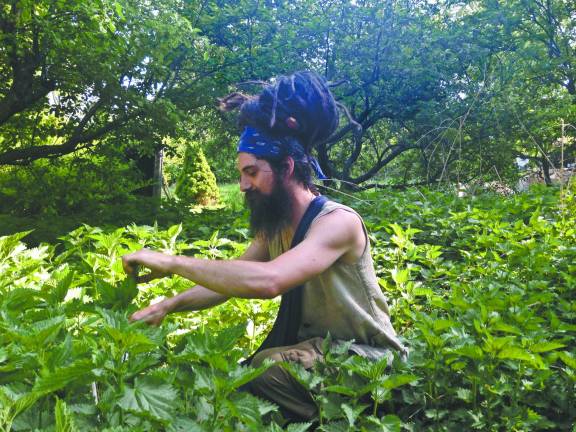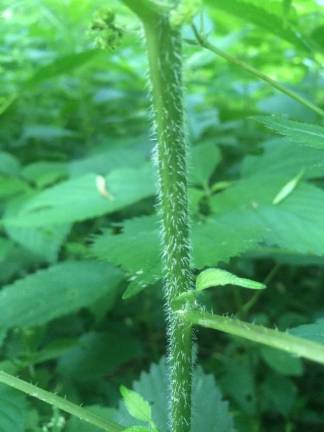A blessing in disguise


Sure, stinging nettle may be covered in tiny hypodermic needles that give you quite a rash if you brush up against them – but the stingers go away when dehydrated or cooked, and even if you do get stung, it’s great for you. Nettle, that common weed that makes you wince, is actually one of the earth’s top five mineral rich plants.
There are two species of nettle, and both wood nettle (Laportea canadensis) and stinging nettle (Urtica dioica) are an excellent tasting as well as medicinal green. Add the greens to soups or stir fries, make tea, or even a dried and powdered supplement to sprinkle on any food (especially for kids; stinging nettle commonly appears in children’s cold and asthma medicine). You can also add that powder to any recipe that requires flour.
The greens are best harvested for eating before they begin to flower. As lore has it, in the flowering stage and when in seed, the greens are harder on the kidneys, although many foragers dispute this idea. (It’s also worth noting that nettle thins blood, so take care if you are already using blood thinning medications.) However, harvesting the leaves for tea or for drying is always OK. The seeds, interestingly, are a wonderful missed opportunity for local, organic, sustainable grain, high in protein and carbohydrates.
Nettle greens are tricky to harvest because, well, they sting, but even this is a kind of therapy called urtication – which is perhaps the origin of the art of acupuncture. For thousands of years, this practice has been applied for inflammatory conditions. A few taps of the underside of nettle leaf to a sore area increases blood flow, which brings all of the minerals and blood cells required for healing into that particular area.
That’s all the rash is: the outward manifestation of increased blood flow to the area. The itching and welts usually peak in 20 minutes and then subside completely in around an hour. If the stings get to be too much, rubbing the juice of jewelweed, chickweed, curly dock, or violet leaf helps to reduce the inflammation and bring coolness to the area. Those plants are some of the helpful allies growing next to nettle.
Nettle stings are also chemical brain-food. One compound it produces is serotonin, directly related to stability, happiness, and a peaceful mood. Another is an anti-histamine called quercetin, which is why one of the most beneficial uses of nettle is treating hay fever and other allergic reactions. DAN FARELLA